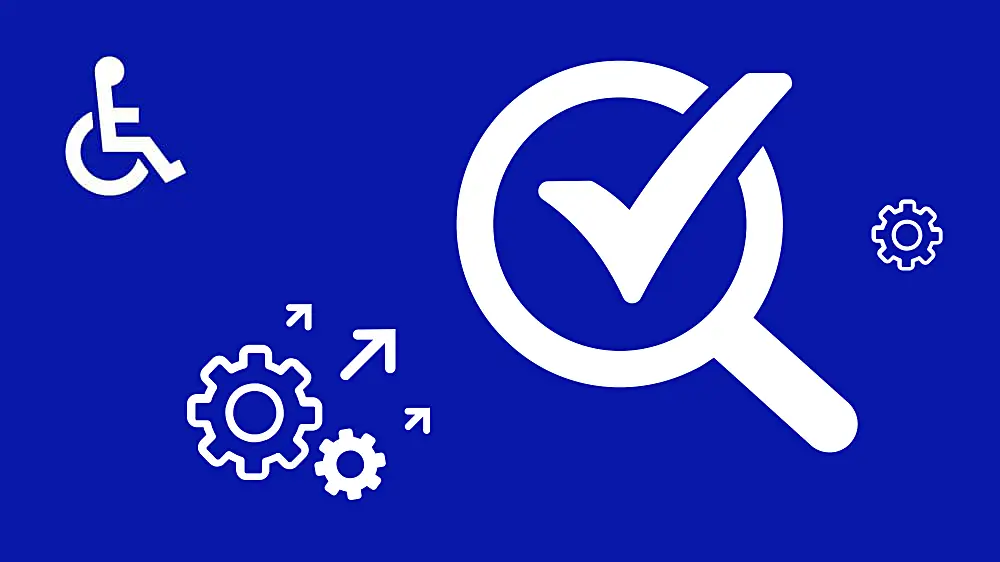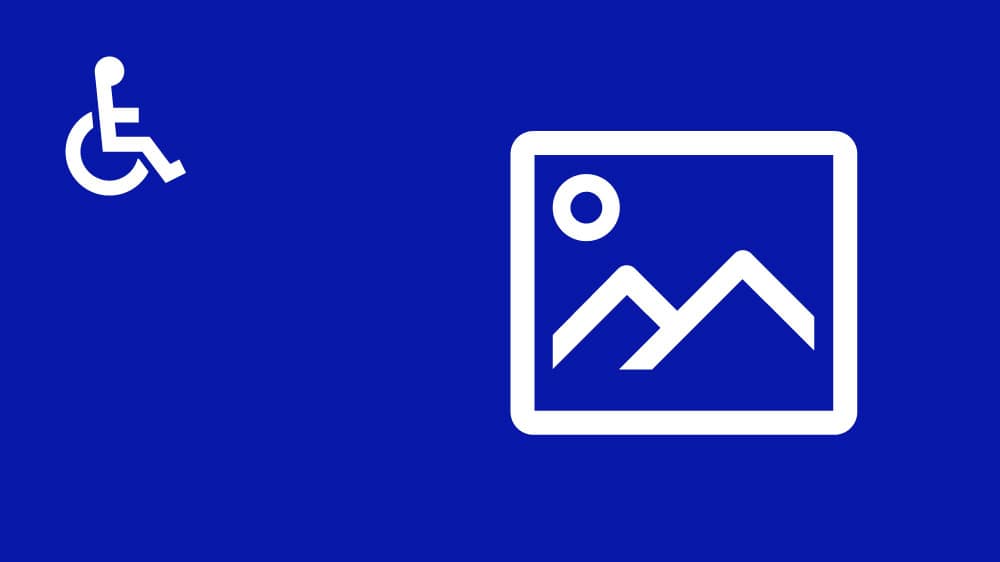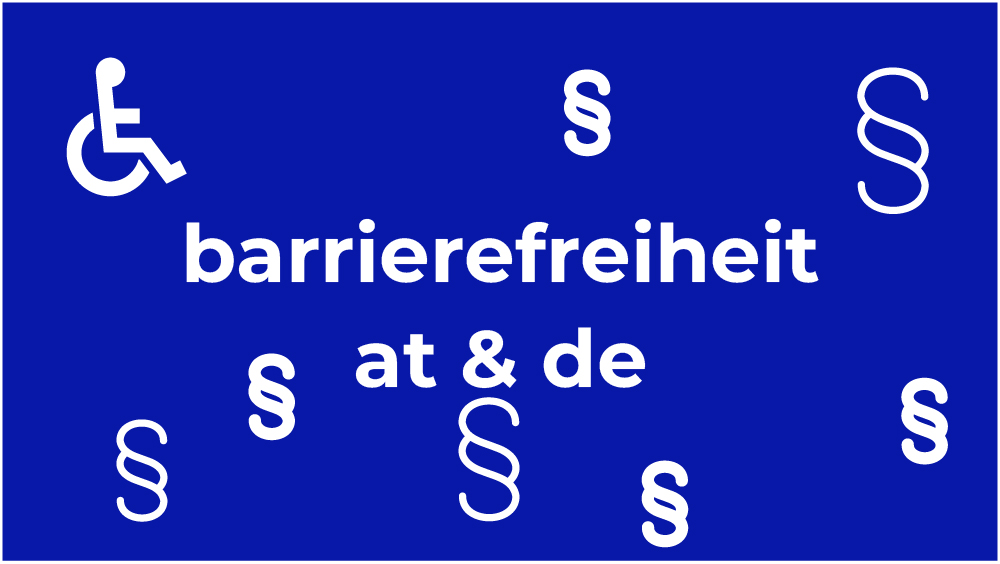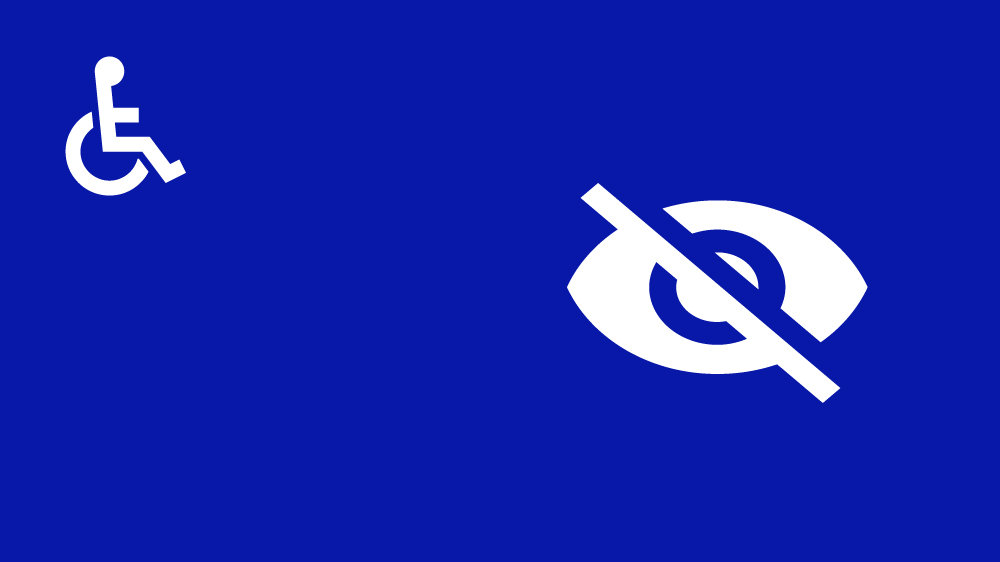the subject of accessibility on the web/internet is still a closed book for many website operators, as the development of accessible websites is still in its infancy.
this article explains why companies, especially small and medium-sized enterprises, should be addressing this issue right now.
Definition, what is web accessibility?
The word "accessibility" is often used in relation to access to buildings or products. On the web, however, accessibility refers to access to websites. Web accessibility refers to the practice of developing websites that are accessible and usable for all people, regardless of disabilities or impairments.
websites in terms of the definition of accessibility must comply with 4 principles: must be perceptible, easy to use, understandable and robust.
- perceptible
people differ in their ability to perceive content. therefore, information and other components must be perceptible for the respective user. (text alternatives for all non-text content, large print, braille, symbols, simple language and simple layout). it should be made easy for the user to see and hear content. - easy to operate
all functions must be operable with the keyboard. sufficient time should be available, the focus sequence must be adhered to. the correct sequence of headings is just as important as skip links and the avoidance of displays that endanger the user (flashing). - understandable
the information presented on the website must be comprehensible. good readability instead of pseudo-important verbiage, consistent navigation with identical types of content and logical operation to avoid errors are important here. - robust
the website is compatible with a wide range of user agents including assistive technologies. use with e.g. screen readers and braille displays, magnification software is possible without any problems.
An accessible website is therefore easy to use for everyone. People with impairments such as visual impairments, hearing impairments, physical impairments, learning disabilities or language impairments can have the same user experience as everyone else.
here you will find some simple examples of tasks for the development of accessible websites:
- Challenge: Insufficient contrast between text and background
solution: use color schemes that provide high contrast to improve readability. tools like contrast checker can help you find color combinations that comply with wcag (web content accessibility guidelines). - Challenge: Not usable navigation for keyboard users
solution: ensure that all interactive elements (such as links, buttons, form elements) can be reached and used with the keyboard. this includes the implementation of keyboard focus and visible focus indicators. - Challenge: Complex and unstructured content
solutionuse of html5 and aria (accessible rich internet applications) landmarks to improve the structure of the website and semantically organize content correctly. this helps screen readers to better interpret the page. - Challenge: Dynamic content that is not accessible
solution: use of aria roles and properties to make dynamic content such as modal dialogs, drop-down menus and notifications accessible to screen readers.
Why is web accessibility important?
Our world is becoming increasingly connected and the use of the internet is growing worldwide. It is important that content on the internet is equally accessible to everyone - regardless of physical, technical or mental abilities.
An accessible website enables people with disabilities to perceive, understand and use the content of the website without restriction. This means that people with visual, hearing, speech, motor or mental impairments can also use the content without any problems.
An accessible website is therefore not only important for people with disabilities, but also for the ever-growing group of older people, for example, who may not be able to see or hear well, as well as for people who are not native speakers of the country in which the website is available.
The inclusion of people with disabilities is an essential aspect of the sustainable development of a society, and the accessibility of websites and apps is an essential part of this inclusion.
In Austria, there are around 18.4 percent of the resident population aged 15 and over with permanent impairments of various kinds, which is projected to be around 1.34 million people corresponds.
These figures illustrate the importance of accessibility and inclusion in different areas of life, including access to the internet and other digital resources
the advantages of an accessible website
for the user, the advantages are obvious. but why should you, as the owner of a company, be interested?
in addition to the already mentioned, generally desirable equality of people with disabilities, it also has clear economic advantages for companies to deal with accessibility on the web.
there are approx. 1.3 million people with a permanent disability, which corresponds to 18.4% of our population (source). in germany we speak of 7.9 million heavydisabled people and a total of 13 million people with disabilities (source).
all in all, a huge number of users who are dependent on accessible websites and who, when we talk about benefits for the company, are immediately "available" as a target group.
the most important benefits for your company:
- you reach significantly more people (approx. 18%)
- generally with high purchasing power
- less competition (as long as the issue of accessibility is not yet widespread).
- better usability of your site and thus an overall longer visit duration with fewer aborts.
- significant ranking advantages at google for accessible sites. web accessibility is firmly anchored in the google guidelines. (blog post by web.dev)
- compliance with legal requirements (see point 5 of this article)
According to Werner Rosenberger, project manager at WACA (Web Accessibility Certificate Austria), web accessibility brings tangible economic benefits as well as social and socio-political ones.
Another expert, Alexander Zeppelzauer from TÜV Trust Itemphasizes that accessible websites are not only more user-friendly, but are also better found and ranked by search engines. This leads to improved usability of your own website and therefore also to a better Google ranking.
eu directives on web accessibility
The EU Web Accessibility Directive, also known as the European Accessibility Actis an EU regulation that aims to create equal access for people with disabilities to websites and mobile applications.
The legal and administrative provisions of this directive must be adopted and published by all eu member states by June 28, 2022. Three years later, in 2025, the requirements of the European Accessibility Act must be implemented. The requirements and obligations of this Directive do not apply to microenterprises providing services within the scope of this Directive - where "microenterprise" means an enterprise that employs fewer than 10 persons and has an annual turnover not exceeding EUR 2 million or an annual balance sheet total not exceeding EUR 2 million.
The directive contains requirements for the design of websites and mobile applications to ensure that they are more accessible and usable for people with disabilities. The directive applies not only to public websites and apps, but also to websites and apps of companies and organizations that are aimed at the public.
which guidelines and laws apply in austria regarding web accessibility?
In Austria, there are both EU-wide directives and national laws that regulate web accessibility. The EU Directive on the accessibility of websites and mobile applications (EU Directive 2016/2102) is a European Union directive designed to regulate web accessibility.
National law in Austria is the Equal Treatment Act (Gesetz über die Gleichbehandlungs von Menschen mit Behinderungen, Federal Law Gazette I No. 100/2002) and the Web Accessibility Act (wzg).
The Web Accessibility Actis an Austrian federal regulation that came into force on September 1, 2020 and obliges all public institutions to offer accessible websites.
another good source of in-depth information on the legal framework conditions in austria is the ffg, the austrian development agency. under the link https://www.ffg.at/digitale-barrierefreiheit you will find valuable information, data and facts.
CURRENT NOTICE:
The Accessibility Act was passed in Austria in mid-2023. This law is the national implementation of the European Accessibility Act. It was debated in parliament and transposed into national law in 2022 and 2023 and is scheduled to come into force in June 2025.
The Accessibility Act obliges all companies in Austria to from 10 employees and/or an annual turnover of 2 million euros to create accessible websites and webshops. Particularly important here is the reversal of the burden of proof, whereby companies must prove compliance with accessibility.
Conclusion:
It is advisable for companies to deal with the new requirements now. In view of the large number of websites affected and the limited number of specialists in accessible web design, it is not advisable to wait until the last minute.
links to further information:
How can you make your website accessible?
there is a bible for the creation of barrier-free websites, the wcag (web content accessibility guidelines). this document, which contains all the essential elements on the subject of accessible websites, was published by the w3c (world wide web consortium) and is constantly being further developed by it. the current version is version 2.2 from october 05, 2023. all new features of this version compared to its predecessor 2.1 from 2018 can be found on the page of w3c.
in general, it should be mentioned that the development of an accessible website becomes easier the earlier the topic is integrated into the development process. if the graphic designer incorporates the requirements into his creative part, the subsequent implementation of the website is much easier and involves less effort than if a lot of changes have to be made afterwards.
as accessibility experts, we are happy to answer any questions you may have on this topic. you can find out more about our services here here.
How can you test your website to check accessibility?
As a small or medium-sized business, you may not have the resources in your company to carry out a professional accessibility audit of your website. Nevertheless, you can get an initial overview of how your website is doing relatively easily.
There are a whole range of tools and services, some of them free, that you can use to test your website for accessibility. Here are some of the best:
- WAVE: https://wave.webaim.org/
- Axe: chrome extension (free browser plug-in)
- tenon: https://tenon.io/
- WebAIM Contrast Checker: webaim
- sitempove accessibility checker: chrome extension
- accessiway scan: accessScan
you can find a detailed description of the accessibility audit process in our article: accessibility audit process
is web accessibility certification important?
mhhh.... here the answer is no, rather no. for medium-sized and large companies we would answer differently, but for small and medium-sized companies we are of the opinion that a certification process is too complex and cannot be demanded. in austria the official certifications are issued by the waca (web accessibility certificate austria) and are of course associated with additional work and costs.
if the website has been implemented properly and with care in accordance with the wcag guidelines, a truthful accessibility statement has been drawn up and published, and care is taken to ensure that updates are also made with accessibility in mind, then we believe that the company has done its duty well.







